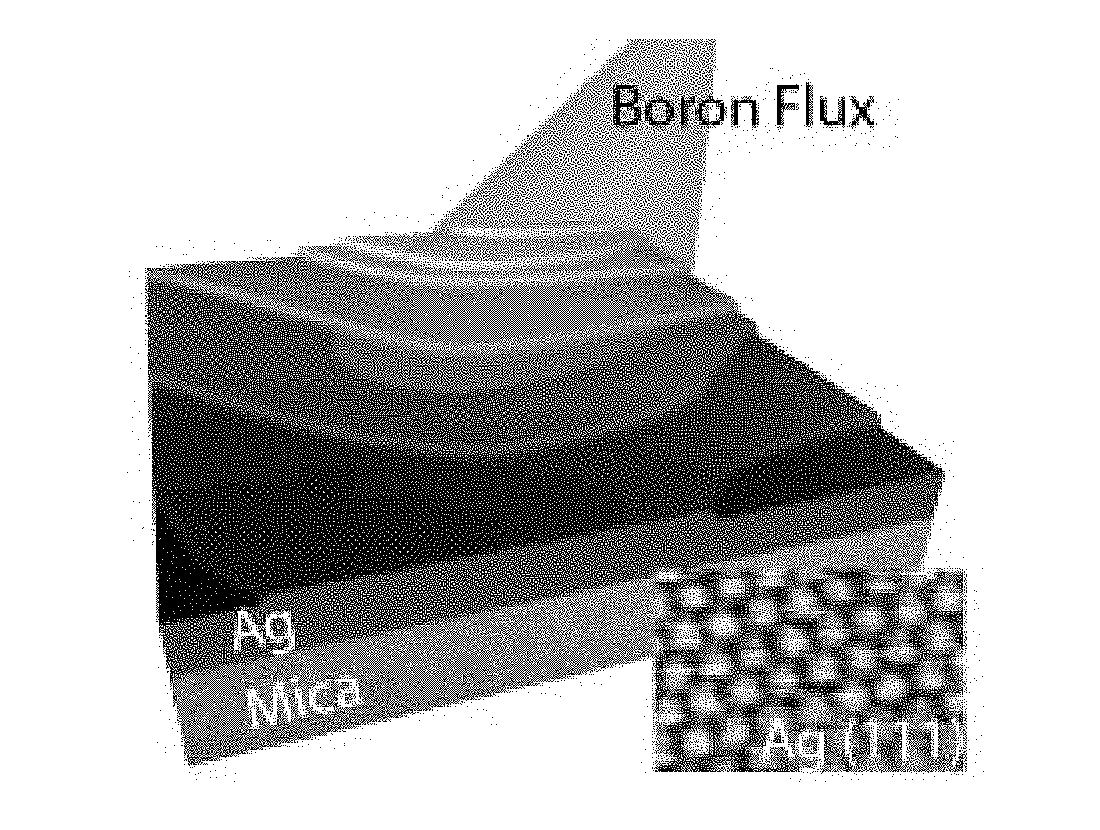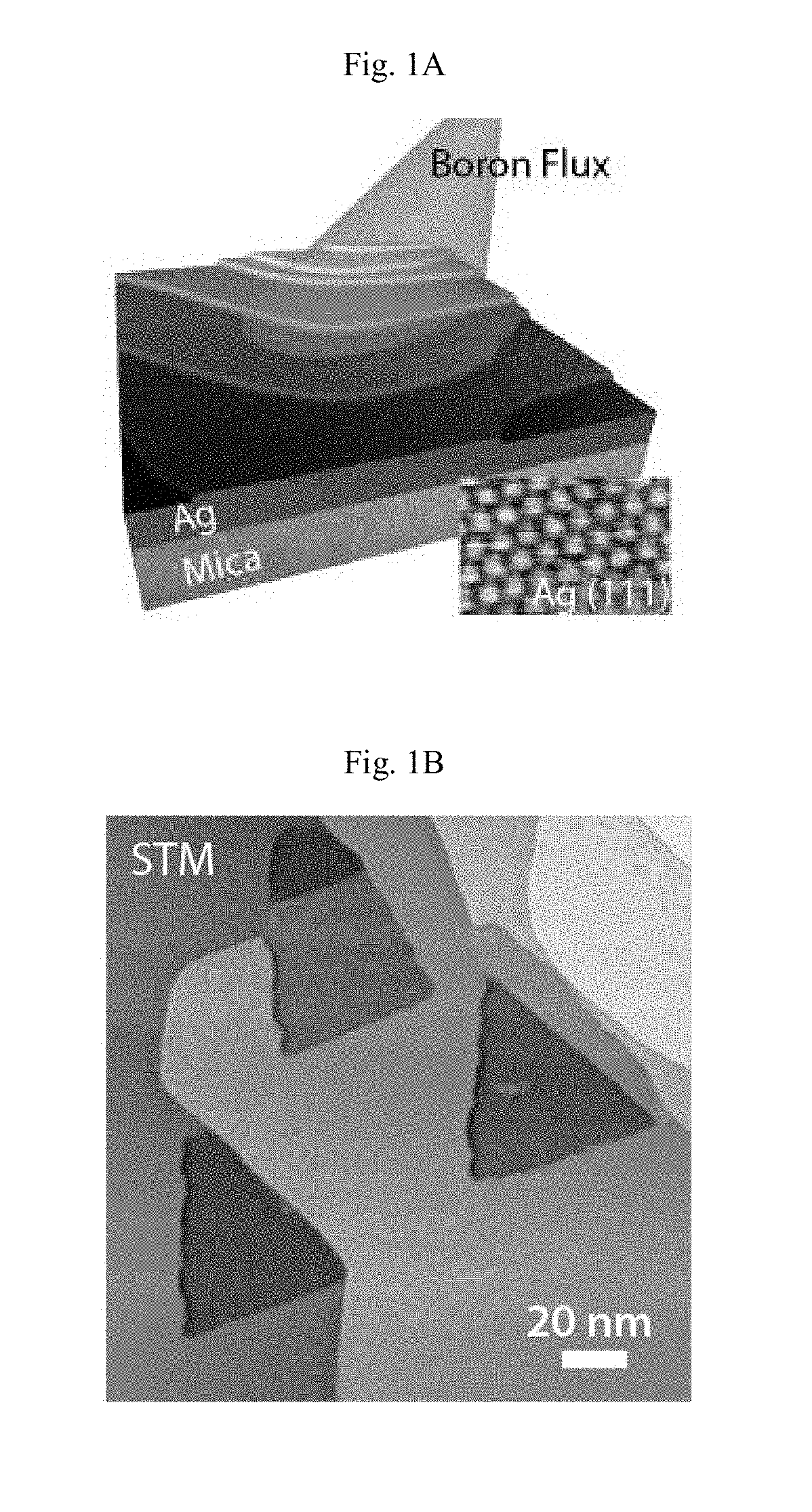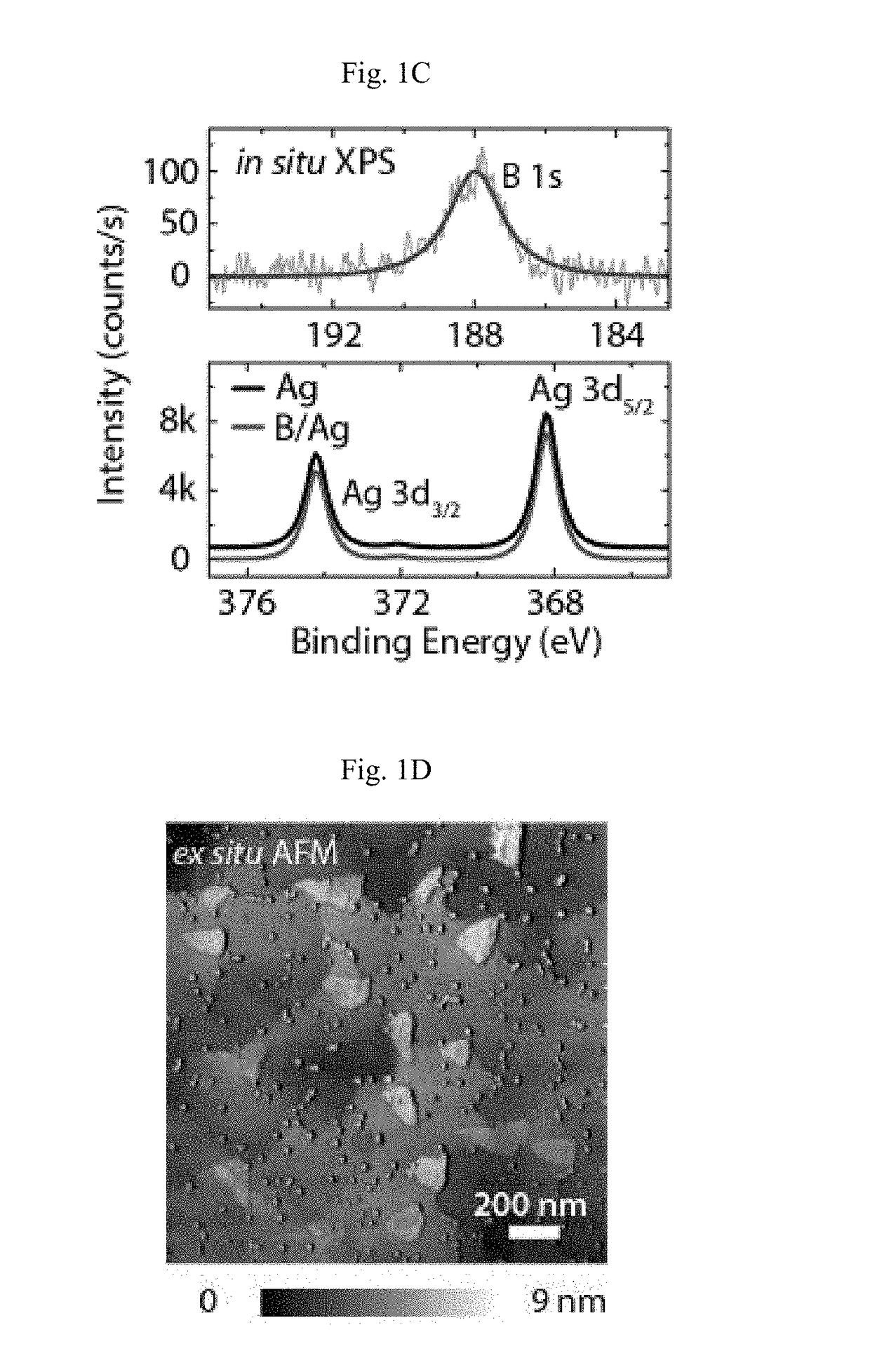Electronically Abrupt Borophene/Organic Lateral Heterostructures and Preparation Thereof
a technology of organic lateral heterostructure and borophene, which is applied in the direction of non-metal conductors, sustainable manufacturing/processing, and final product manufacturing, etc., can solve the problems of boron showing significantly more complex and diverse bulk structure, difficult methods for experimentally realizing atomically clean and abrupt lateral heterojunctions, and ill-defined interfacial regions
- Summary
- Abstract
- Description
- Claims
- Application Information
AI Technical Summary
Benefits of technology
Problems solved by technology
Method used
Image
Examples
example 1
[0053]Growth of borophene / PTCDA lateral heterostructures. All growth is performed in a UHV preparation chamber (pressure −9 Torr) that is directly connected to a loadlock, STM, and XPS system. Ag(111) thin films (˜300 nm thick) on mica substrates (Princeton Scientific Corp.) are cleaned by repeated Ar ion sputtering at 3.3×10−6 Torr (30 min) followed by annealing at 550° C. (30 min). The deposition of boron is achieved by electron-beam evaporation (SPECS EBE-1) of a pure boron rod (ESPI metals, 99.9999% purity) onto the cleaned Ag(111) substrates held at 480° C. The deposition flux is measured by the flux electrodes of the evaporator and is maintained at 20 to 28 nA with a filament current of ˜5.8 A and accelerating voltage of 1.3 to 1.6 kV. The typical deposition time is 20-30 min to achieve submonolayer coverage of borophene. The electron-beam evaporator is housed in a separately pumped chamber with a base pressure of 8×10−11 Torr, and the boron rod is degassed for >6 hr preceding...
example 2
[0054]Scanning Tunneling Microscopy and Spectroscopy.
[0055]A home-built UHV STM (˜10−10 Torr) is used for STM / STS characterization at room temperature with a Lyding-design microscope. (See, E. T. Foley, N. L. Yoder, N. P. Guisinger, M. C. Hersam, Cryogenic variable temperature ultrahigh vacuum scanning tunneling microscope for single molecule studies on silicon surfaces, Rev. Sci. Instrum. 75, 5280-5287 (2004). However, conventional, commercially-available instrumentation can be used with comparable effect.) The bias voltage is applied to the sample with respect to the electrochemically etched PtIr tip (Keysight). The piezo-scanner is calibrated against the Ag(111) lattice (x y) and atomic step height (z). Nanonis (SPECS) control electronics are used for data collection. STS measurements are carried out with a lock-in amplifier (SRS model SR850) with 30 mVRMS amplitude and ˜8.5 kHz modulation frequency. Stable and reproducible spectroscopy was achieved following tip conditioning tha...
example 3
[0056]X-Ray Photoelectron Spectroscopy.
[0057]In situ XPS spectra are taken with an Omicron DAR 400 M X-ray source (Al Kα), XM 500 X-ray monochromator, and EA 125 energy analyzer in a UHV chamber (3×10−10 Torr) that is integrated with the STM system and preparation chamber. The XPS energy resolution is 0.6 eV using a pass-energy of 20 eV for core-level spectra. Modified Shirley backgrounds have been subtracted using Avantage (Thermo Scientific) software. Given the trace amount of adventitious carbon for the clean Ag(111) surface (FIG. 16), all peaks are fitted after calibrating the spectra to the Ag 3d5 / 2 core-level peak (368.2 eV). This calibration is validated by 5 / 2 peaks (FIG. 3) for clean Ag(111), borophene / Ag(111), and PTCDA / borophene / Ag(111) in consecutive runs.
PUM
| Property | Measurement | Unit |
|---|---|---|
| binding energy | aaaaa | aaaaa |
| binding energy | aaaaa | aaaaa |
| thick | aaaaa | aaaaa |
Abstract
Description
Claims
Application Information
 Login to View More
Login to View More - R&D
- Intellectual Property
- Life Sciences
- Materials
- Tech Scout
- Unparalleled Data Quality
- Higher Quality Content
- 60% Fewer Hallucinations
Browse by: Latest US Patents, China's latest patents, Technical Efficacy Thesaurus, Application Domain, Technology Topic, Popular Technical Reports.
© 2025 PatSnap. All rights reserved.Legal|Privacy policy|Modern Slavery Act Transparency Statement|Sitemap|About US| Contact US: help@patsnap.com



